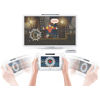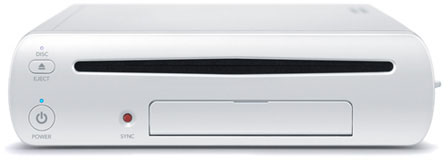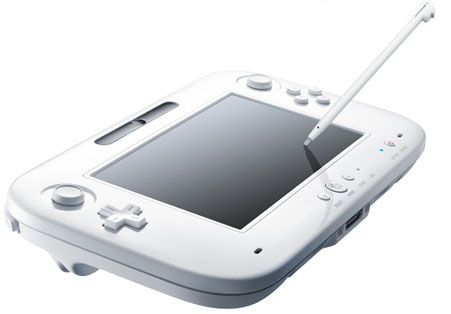- Qualcomm Launches Snapdragon 4 Gen 2 Mobile Platform
- AMD Launches Ryzen PRO 7000 Series Mobile & Desktop Platform
- Intel Launches Sleek Single-Slot Arc Pro A60 Workstation Graphics Card
- NVIDIA Announces Latest Ada Lovelace Additions: GeForce RTX 4060 Ti & RTX 4060
- Maxon Redshift With AMD Radeon GPU Rendering Support Now Available
Wii? Maybe U… But I’m Not Sold Yet

Nintendo announced its long-awaited Wii successor at E3, called “Wii U”, and so far, its reception has been mixed. While some are calling it the best thing since sliced bread, others are underwhelmed, finding it to be a minor evolution over the original. Whatever your thoughts, one thing does remain clear: we need better games.
Page 1 – Nintendo’s Muddy Waters
Right now, the entirety of the Internet is ablaze with the latest E3 scandal or brilliance (whichever you call it) – the Wii U. Let’s be honest – it’s a fairly polarizing entry back into the console market for Nintendo, after the incredible hype and hit-or-miss features of the original, as-yet-unduplicated Wii.
The new Wii U (I’ll try to refrain from bad puns, as many are simply too easy) is essentially that same take-no-prisoners redefinition of gaming we saw in the Wii – rehashed and given a coat of gloss to update it, with a couple extra nuts and bolts slapped on.
Is this a good thing, or a bad thing? I suppose it depends on if you liked the original – which I did. However, even with my great love of Ninty’s white plastic sex appeal (I think I mean both the Wii AND my DS Lite…), it’s time to look at the new launch with a bit of caution. Sure, there are some nice features, but we’ve seen this “rehash” road before – just look at the DSi and the DSi XL to see that not every new product is a must-buy.
With that being said, what new things that the Wii U does bring to the table follow its mantra of the family-focused system, heavily aimed at people who are casual gamers or who want the fun of a social experience as part of the games.

Let’s talk about that for a minute, because I think a lot of people bust on the Wii simply because they don’t fit that niche. The Wii was never designed to be the fastest console with the prettiest graphics – Call of Duty and gamertags were never a real part of the roadmap. The games, addons and accessories that have been released for the Wii have spoken: If you want 50-inch screens of high-def, grenade-lobbing, body-exploding fun, the Wii simply isn’t the console for that.
Instead, it has refined itself throughout its existence as the bastion of casual, social, pick-up-and-play gaming…and social means “having people over,” not “strap on your headset and frag some n00bs.” The games that sold well and still do sell well (as they are mostly the same games through the console’s whole life) are often smaller, simpler concepts that could involve a lot of people, or are one of Nintendo’s hallmark franchises.
With this in mind, Nintendo’s newest offering is actually a brilliant piece of hardware for its target market – gaming that does not require one person to monopolize the family room while everyone else sits idly by. Honestly, how many people play split-screen Killzone or Medal of Honor? Most of us would rather jump on Xbox Live or PSN and get all 50 inches of screen real-estate to ourselves, talking to our friends over microphones. The original Wii illustrated Nintendo’s realization that not everyone wants that particular version of a “social” gaming experience, and the new Wii U expands on that. It was designed to fit a totally different market than any other console, and as such it shouldn’t be expected to be or compare to them.
For instance, the new controller is a pretty clear message – someone recognizes that not every family wants its main TV commandeered by a high-def war simulation every day. Of course, some say this new controller is clunky and will likely be “gimmicky” – but I really don’t think it’s ever meant to be the day-to-day interface. After all, the whole system will still work fine with the original Wiimotes.

Instead, look at it as a remote desktop for the Wii U – this new controller allows a person who wants to play a game to not have to fight anyone over the TV. Now, a couple kids can still play Mario Kart while Dad can watch the football game, all without having to ALSO buy two handheld systems and two smaller games that can’t interface with the bigger game.
When you look at it as a series of refinements instead of a “next generation,” the new Wii U becomes the sniper rifle to the Wii’s bazooka – It takes better aim at shattering the barrier between being a single person’s gaming console and being a family gaming appliance. Just like you would very rarely need to turn on your oven broiler to make toast when there’s a perfectly good toaster there, the Wii U wants to be your one-stop-shop for day-to-day gaming – accessible, simple to use, and tidy. There’s nothing wrong with this – in fact, it’s a market that’s far underserved, even with the original Wii.
It’s THIS issue – the idea that this market is STILL not filled effectively – that I fear will leave consumers with a bitter taste on the release of the new Wii U, not the rehashing of the Wii’s strongest points. As well as the Wii did at breaking barriers and getting people interested in gaming, it never followed up with worthwhile games that met the console’s goals. As I mentioned above, the games that sold well are either simpler party game concepts, or Nintendo’s own long-term franchises. In fact, I’d dare say that most of the top games even overlap these requirements, with games like Super Mario Wii, the newest Donkey Kong, or Mario Kart all being both great multiplayer games and solely Nintendo first-party releases.
Support our efforts! With ad revenue at an all-time low for written websites, we're relying more than ever on reader support to help us continue putting so much effort into this type of content. You can support us by becoming a Patron, or by using our Amazon shopping affiliate links listed through our articles. Thanks for your support!




